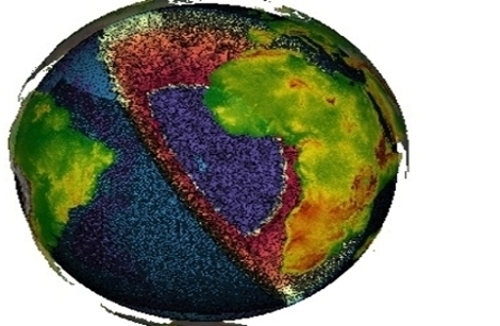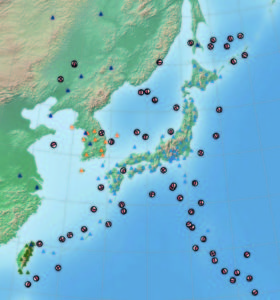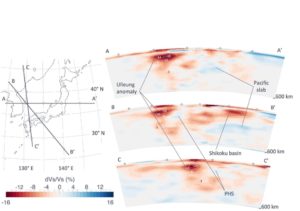In this special guest feature, Lance Farrell from Science Node writes that supercomputers are helping scientists peer under the Earth’s crust and spot a massive magma reservoir lurking below an unsuspecting island.
 A lake of lava lies directly below a small South Korean island. How it got there has scientists stumped.
A lake of lava lies directly below a small South Korean island. How it got there has scientists stumped.
In a study recently published in the Journal of Geophysical Research, Saule Simute and Andreas Fichtner used supercomputers to identify a reservoir of magma starting about 50 km (31 mi) below Ulleung, a small island in the Sea of Japan. Simute and Fichtner are collaborators from the Department of Earth Sciences at ETH Zurich.
Dubbed the Ulleung anomaly, the magma reservoir is about 300 km (186 mi) wide and 200 km (124 mi) deep. In contrast, the island is only about 10 km (6 mi) wide.
Though the reservoir is vast, it is not likely to be a pool of 100% molten material. More likely, the reservoir consists of only partially molten rock, with the fluid magma occurring along rock boundaries or fissures within the Earth, says Fichtner, professor at the ETH Institute of Geophysics.

Community model. Seismic records from around the Japanese island region comprise the observational benchmark compared against Piz Daint simulations. The models picked up a 300 km (186 mile) wide reservoir of magma in the Sea of Japan. Courtesy Andreas Fichtner, ETH Zurich.
To locate the lava, Fichtner’s team started with seismic wave records of 58 earthquakes, for a total of 5,500 three-component waveform data sets. They then compared the waveforms with seismic wave simulations, optimized through 19 iterations to ensure the computer models matched observations from the seismic stations.
These simulations produced a three-dimensional rendering of the crust and upper mantle of the Japanese islands and surrounding area.
“What is new about our method is its ability to extract as much information as possible from the data – and this is why we manage to discover new aspects of Earth structure, such as this reservoir,” says Fichtner. “However, the price to pay is enormous computational requirements.”
Fichtner’s simulations clocked about 10 million CPU and GPU hours on Piz Daint at the Swiss National Supercomputing Center (CSCS) and the now decommissioned Huygens at the SURFsara, the national supercomputing center of the Netherlands.

Lake of fire? The Piz Daint supercomputer spotted a large reservoir of magma right below the tiny South Korean island of Ulleung. No harm to humans is expected, but the origin of the magma pool remains unclear. Courtesy Andreas Fichtner, ETH Zurich.
The Ulleung anomaly is an exciting discovery, but also presents a difficult question. Since the shallow depth of the magma pool is usually only associated with active volcanoes, such as those beneath Iceland or Hawaii, how such a massive structure can exist at only 50 km (31 mi) below the Earth without a nearby active volcano leaves scientists puzzled.
Ulleung is much father away from its subduction zone than are most volcanoes. (A subduction zone is the area where one tectonic plate sinks beneath another due to the forces of continental drift.)
Resolution limits also leave questions unanswered, such as if and how the magma reservoir connects to the surface. The island’s extinct volcano (last eruption about 5,000 years ago) suggests a possible answer, but seismic tomography can’t see this.
Despite the size of the reservoir and the uncertainty surrounding its origin, little threat is expected from the anomaly.
As a scientist, it is always dangerous to say ‘no’ when this type of question comes. We do not know, but intuitively we would think that there is little danger on human time scales,” says Fichtner.
Beyond the sheer academic joy associated with discovering the anomalous magma field, the models will also improve prediction of ground motion resulting from earthquakes.
So the tiny island in the Sea of Japan is safe . . . for now.
Source: Science Node under the Creative Commons license.
Sign up for our insideHPC Newsletter



